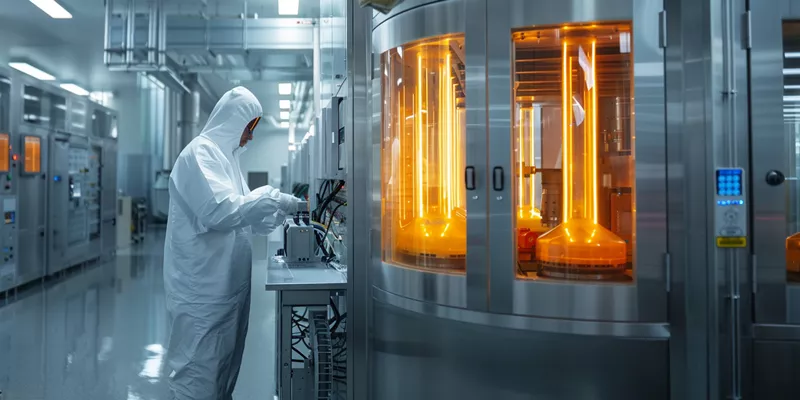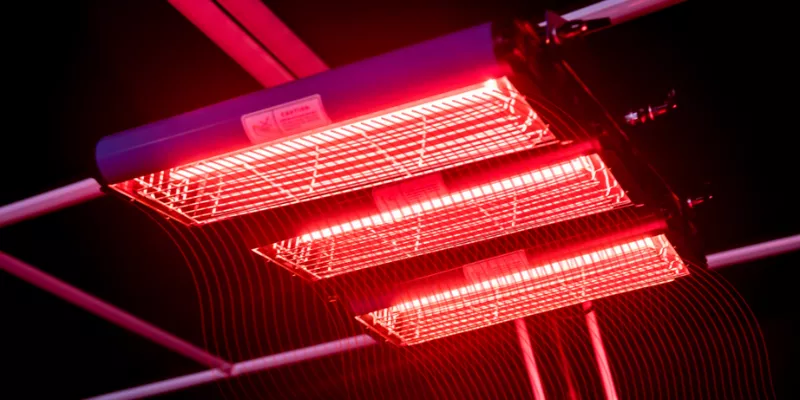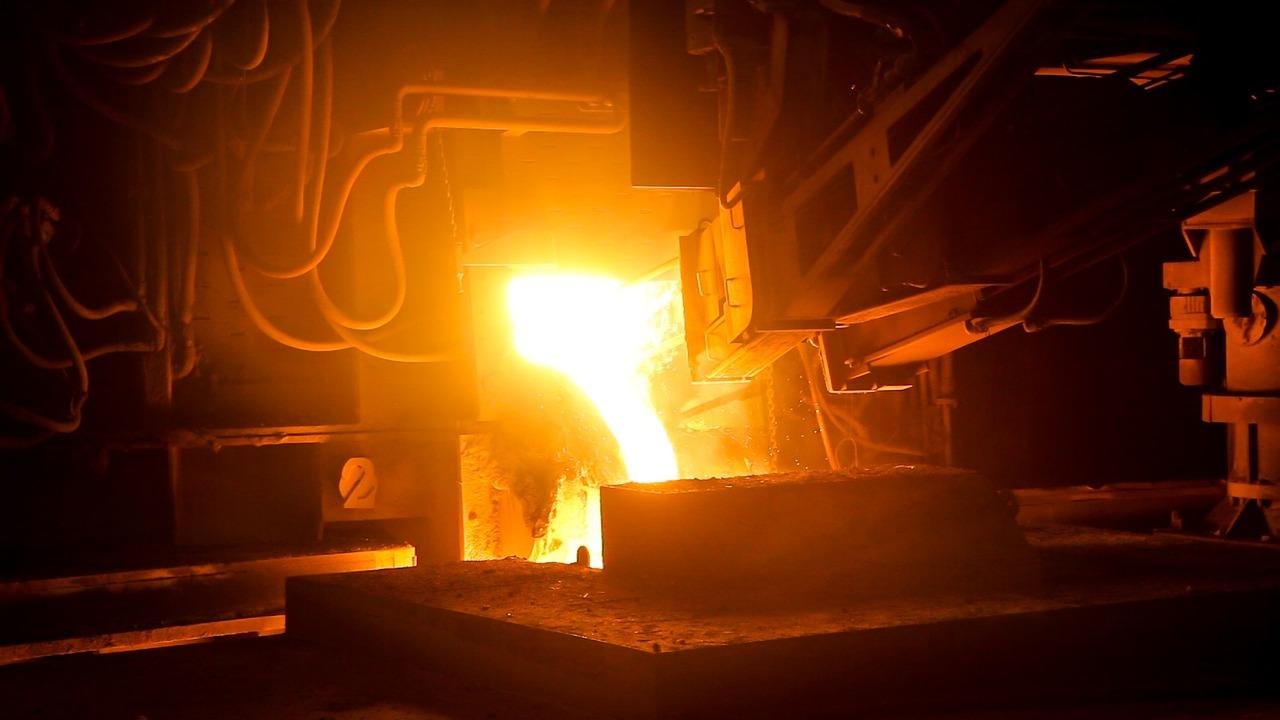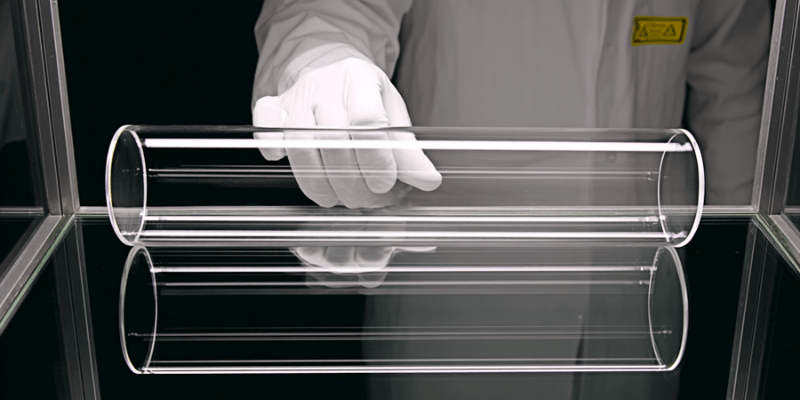
Selecting quartz tubes for Chemical Processing demands careful attention to purity, wall thickness, and resistance to aggressive chemicals and high temperatures. High-purity quartz offers outstanding durability, even when exposed to strong acids or thermal cycling. Improper selection can shorten service life, introduce contamination, or create safety risks. Engineers must match tube properties to process conditions for reliable and safe operation.
Key Takeaways
Choose high-purity quartz tubes to ensure long service life and reduce contamination risks in chemical processing.
Understand the importance of wall thickness; thinner walls improve thermal cycling life, while thicker walls enhance pressure resistance.
Regular cleaning and maintenance of quartz tubes extend their lifespan and prevent unexpected failures during operations.
Select quartz tubes based on specific process conditions, including temperature and chemical exposure, to optimize performance and safety.
Review supplier certifications and impurity levels to ensure the quality and reliability of quartz tubes in demanding applications.
What Chemical Resistance Properties Make Quartz Tubes Ideal for Processing Applications?
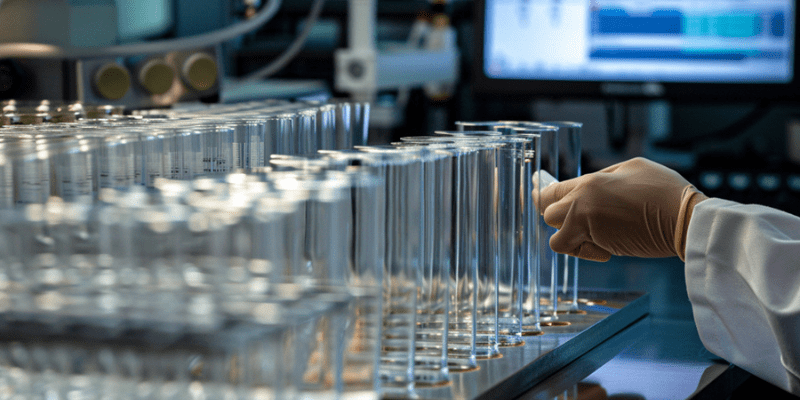
Quartz tubes for Chemical Processing offer unmatched durability in environments where aggressive chemicals and high temperatures challenge most materials. Their unique chemical structure and purity levels provide superior resistance to acids, alkalis, and solvents. Engineers rely on these properties to ensure safe, long-lasting operation in demanding chemical processing applications.
Understanding Si-O Bond Chemistry That Provides Acid and Alkali Resistance
The chemical resistance of quartz tubes for Chemical Processing comes from the strong silicon-oxygen (Si-O) bonds in their structure. These covalent bonds create a stable network that resists attack from acids and alkalis, making quartz tubes suitable for use with most corrosive substances. The macromolecular structure of quartz further enhances its ability to withstand hydrolysis and maintain integrity in harsh environments.
Quartz tubes generally resist acid attack, except for hydrofluoric acid, which can break down the Si-O bonds and compromise the tube. Crystalline quartz dissolves slowly in alkaline solutions, showing its resistance to alkali attack and making it reliable for a wide range of chemical processes. This combination of strong bonds and complex structure ensures that quartz tubes for Chemical Processing remain chemically inert and stable.
Cause | Effect |
|---|---|
Strong Si-O bond | Prevents chemical attack from acids and alkalis |
Macromolecular structure | Enhances hydrolysis resistance |
Acid exposure | Maintains integrity except with hydrofluoric acid |
Alkali exposure | Dissolves slowly, ensuring long-term stability |
How Metallic Impurities (Al, Ti, Fe) Compromise Chemical Resistance Performance
Metallic impurities such as aluminum, titanium, and iron can reduce the chemical resistance of quartz tubes for Chemical Processing. These impurities create weak points in the quartz structure, allowing acids and alkalis to attack and degrade the material more quickly. High-purity quartz, with minimal metallic content, maintains its chemical inertness and extends service life in demanding environments.
Engineers must specify quartz tubes with strict impurity limits, especially for processes involving concentrated acids or high temperatures. Industry standards recommend impurity levels below 25 ppm for contaminants and alkali levels below 1 ppm to prevent unwanted reactions and contamination. By choosing tubes with verified purity, facilities can avoid premature failure and maintain product quality.
In summary, selecting quartz tubes with low metallic impurities ensures:
Longer service life in aggressive chemical environments
Reduced risk of contamination in sensitive processes
Consistent performance under high temperature and acid exposure
Temperature-Dependent Chemical Attack Rates for Common Processing Reagents
Temperature plays a critical role in the chemical attack rates on quartz tubes for Chemical Processing. As temperature increases, the rate of chemical reactions accelerates, which can lead to faster degradation if the tube material is not sufficiently pure or robust. Quartz tubes maintain stability at high temperatures, but exposure to hydrofluoric acid at any temperature can cause rapid dissolution.
Engineers must match the purity grade of quartz tubes to the process temperature and chemical concentration. For example, tubes with ≥99.995% SiO₂ purity withstand wide temperature gradients and high heat rates, making them ideal for furnace chambers and reactors. Standard wall thickness ranges from 0.3mm to 8mm, with custom options available to optimize resistance and minimize corrosion.
Temperature | Chemical Attack Rate | Recommended Purity Grade |
|---|---|---|
<400°C | Low | ≥99.9% |
400–800°C | Moderate | ≥99.95% |
>800°C | High | ≥99.995% |
Which Process Conditions Require Specification of High-Purity vs. Standard Quartz Grades?
Selecting the right quartz tube grade depends on the specific chemical process, temperature, and purity requirements. High-purity quartz ensures reliable performance in demanding environments, while standard grades may suffice for less critical applications. Understanding these distinctions helps engineers make informed decisions for safe and efficient operations.
Devitrification Mechanisms and Temperature Thresholds in Chemical Processing Service
Devitrification occurs when amorphous quartz transforms into crystalline forms under high temperatures, reducing chemical resistance. This process accelerates above 1000°C, especially when alkali metals or metallic impurities are present in the quartz tubes for Chemical Processing. High-purity quartz with minimal impurities resists devitrification, maintaining structural integrity and chemical inertness even during prolonged exposure to elevated temperatures.
Engineers must consider both temperature and chemical concentration when specifying quartz tube grades. For example, diffusion and oxidation processes operating between 800°C and 1200°C require high-purity quartz to prevent devitrification and maintain performance. Epitaxial growth, which demands extremely high purity, also falls into this category.
Process Type | Temperature Range (°C) | Purity Requirement |
|---|---|---|
Diffusion | 800 - 1200 | High purity required |
Oxidation | High | High purity required |
Epitaxial Growth | High | Extremely high purity needed |
Selecting the correct purity grade based on process temperature and chemical exposure extends service life and reduces maintenance needs.
Cost-Benefit Analysis: High-Purity vs. Standard Grades for Different Applications
Cost plays a significant role in choosing between high-purity and standard quartz tubes. High-purity quartz costs more due to its superior performance and strict manufacturing controls, but it offers longer service life and better resistance to contamination. Standard quartz, while more affordable, suits general industrial uses where extreme purity is not essential.
Facilities processing pharmaceuticals or semiconductors often require high-purity quartz to avoid product contamination and meet regulatory standards. In contrast, basic laboratory experiments or general industrial applications can use standard quartz, balancing cost and performance. The initial investment in high-purity quartz pays off in reduced downtime and fewer replacements for critical processes.
Type of Quartz | Purity Level | Cost Implication | Applications |
|---|---|---|---|
High-Purity Quartz | > 99.9% SiO₂ | Generally more expensive due to superior performance | Semiconductor manufacturing, medical instruments |
Standard Quartz | < 99.9% SiO₂ | More affordable, suitable for less critical uses | General industrial applications, basic lab experiments |
Choosing the right grade ensures both cost efficiency and reliable operation in chemical processing environments.
How Do Wall Thickness and Thermal Properties Affect Performance in Processing Reactors?
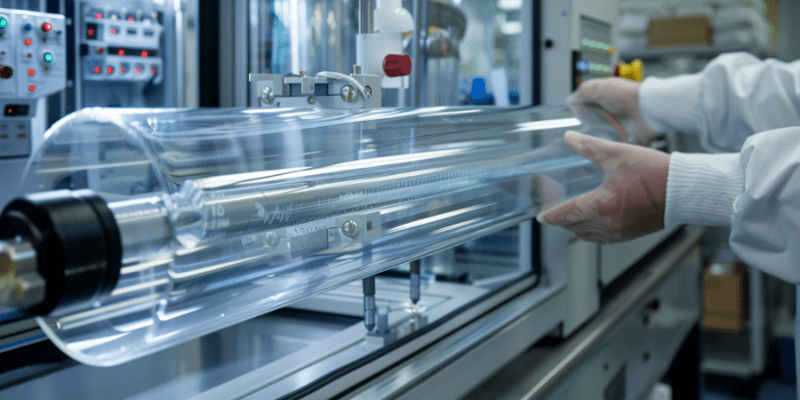
Engineers must consider wall thickness and thermal properties when selecting quartz tubes for Chemical Processing. These factors determine how well the tubes withstand pressure, temperature changes, and chemical attack. Proper selection ensures safe operation and extends service life in demanding reactor environments.
Pressure Vessel Design Calculations for Quartz Tube Wall Thickness
Wall thickness directly affects the ability of quartz tubes to handle internal pressure. Thicker walls provide greater resistance to pressure by offering more material to absorb mechanical stress, but they also increase weight and may reduce the tube’s ability to withstand rapid temperature changes. The quality of the quartz, such as fused silica, plays a crucial role in high-pressure applications because it improves resistance to internal stresses and enhances overall durability.
Engineers often select wall thickness based on the pressure requirements of the reactor. For example, a 1 mm thick quartz tube can handle up to 30 megapascals, while a 2 mm thick tube can withstand even higher pressures. Both wall thickness and material quality must be considered together for optimal performance in demanding chemical processing applications.
Thickness Range | Key Characteristics | Best Applications |
|---|---|---|
1mm to 3mm | High transparency, flexibility, less durable under thermal stress | Visual observation, crystal growth, chemical reactions |
4mm to 6mm | Moderate durability, balanced thermal resistance | General-purpose use |
7mm to 10mm | Maximum durability, better insulation | High-temperature applications, thermal stress resistance |
Thermal Stress Analysis: Why Thinner Walls Improve Thermal Cycling Life
Thinner quartz tube walls improve resistance to thermal shock during rapid temperature changes. These thinner walls allow heat to move through the material more quickly, which reduces the buildup of thermal stress and helps prevent cracking or failure. In reactors that cycle between ambient and high temperatures, thinner walls can survive thousands of cycles before showing signs of fatigue.
Engineers choose thinner walls for applications that require frequent heating and cooling. This approach extends the operational life of the tubes and reduces the risk of unexpected failures during thermal cycling. Thinner walls also make it easier to control temperature gradients along the tube’s length.
In summary, thinner walls:
Enhance thermal shock resistance
Support longer service life in cyclic operations
Reduce the risk of cracking during rapid temperature changes
Heat Transfer Limitations in Exothermic Reaction Applications
Heat transfer plays a critical role in exothermic chemical reactions inside quartz tubes. The thermal conductivity of quartz is lower than that of metals, which can limit the rate at which heat escapes from the reaction zone and may cause localized hot spots. These hot spots can lead to thermal stress, devitrification, or even tube failure if not managed properly.
Engineers often address these limitations by using external cooling jackets or multi-zone temperature control systems. These solutions help maintain safe temperature gradients and prevent damage to the tube during high-energy reactions. Proper design and monitoring ensure that the tube remains stable and effective throughout the process.
Cause | Effect |
|---|---|
Low thermal conductivity | Slower heat dissipation, risk of hot spots |
Localized overheating | Increased thermal stress, potential tube failure |
External cooling | Maintains safe temperature gradients, extends tube life |
What Quality Standards and Certifications Ensure Reliable Chemical Processing Performance?
Quality standards and certifications play a vital role in ensuring quartz tubes perform reliably in chemical processing environments. Engineers must evaluate purity, resistance, and supplier credentials before procurement. These steps help facilities avoid costly failures and maintain safe operations.
Interpreting ICP-MS Certification Reports: What Impurity Levels Matter for Your Application
ICP-MS certification reports provide essential information about elemental impurities in quartz tubes. Engineers must review these reports to confirm that trace metals, such as aluminum, titanium, and iron, remain below critical thresholds for chemical processing. Laboratories use modern instrumentation and strict protocols to achieve ultra-trace detection, which supports compliance with USP 232 and other industry standards.
Detection limits matter because even small amounts of contamination can affect product quality or tube durability. Clean laboratory techniques, including careful handling of reagents and apparatus, help minimize contamination during analysis. Analysts must control environmental factors to ensure robust and accurate results.
Facilities should select quartz tubes with impurity levels below 20 ppm for metals and below 1 ppm for alkalis.
Summary of ICP-MS report interpretation:
Ultra-trace detection ensures product safety
Clean lab practices reduce contamination risk
Low impurity levels extend tube service life
ISO 695 Hydrolytic Resistance Classifications and Long-Term Performance Correlation
ISO 695 hydrolytic resistance classifications help engineers predict how quartz tubes will perform over time. The standard measures how much material dissolves when exposed to boiling acid, assigning grades such as HGA 1, HGA 2, or HGA 3. Tubes with HGA 1 classification show less than 0.01 mg/cm² weight loss after 1000 hours, indicating superior durability in harsh chemical environments.
Long-term performance depends on both hydrolytic resistance and process conditions. Tubes with higher resistance last longer in reactors using concentrated acids or operating at elevated temperatures. Facilities that choose HGA 1 quartz tubes often report service lives exceeding 14,000 hours, reducing maintenance costs and downtime.
Engineers should match hydrolytic resistance grades to their specific chemical processes for optimal results.
Classification | Cause | Effect |
|---|---|---|
HGA 1 | Minimal dissolution | Long service life, high durability |
HGA 2 | Moderate dissolution | Shorter service life |
HGA 3 | Higher dissolution | Frequent replacement needed |
Manufacturer Qualification Checklist for Chemical Processing Tube Procurement
Selecting a qualified manufacturer ensures quartz tubes meet all necessary standards for chemical processing. Engineers should verify supplier certifications, including ISO 12123 for optical materials and batch-specific ICP-MS impurity analysis. Reliable vendors provide dimensional inspection reports, hydrolytic resistance documentation, and traceability records for each tube.
Supplier reputation and delivery timelines also impact procurement decisions. Facilities benefit from choosing manufacturers with proven field service history and support for chemical processing applications. Comprehensive certification packages help engineers compare products and avoid generic claims.
A thorough qualification process leads to safer operations and longer tube service life.
Checklist for manufacturer qualification:
Verify ISO and ICP-MS certifications
Request dimensional and resistance reports
Assess supplier reputation and delivery reliability
How Can Chemical Processing Facilities Optimize Quartz Tube Service Life and Performance?
Chemical processing facilities can significantly extend the service life of quartz tubes by following best practices in cleaning, inspection, and operational control. Proper maintenance and monitoring help prevent unexpected failures and reduce overall costs. Facilities that implement these strategies achieve safer, more reliable operations.
Step-by-Step Pre-Use Cleaning Protocol for Maximum Service Life
A thorough cleaning protocol prepares quartz tubes for long-term use in chemical processing. Facilities often use acid or alkaline washing methods to remove surface deposits and stains, followed by careful rinsing to ensure no residue remains. Mechanical cleaning, sometimes involving hydrofluoric acid, may be necessary for stubborn contaminants, but operators must follow strict standards to avoid damaging the tube.
Each cleaning method targets specific types of contamination, and the choice depends on the process requirements and the nature of the residues. Acid washing dissolves mineral deposits, while alkaline solutions remove organic stains; mechanical cleaning addresses persistent buildup. After cleaning, a final rinse with high-purity water ensures the tube is free from chemicals that could trigger corrosion or devitrification.
Cleaning Method | Description |
|---|---|
Acid Washing | Soak in acid solution (max 10%) to dissolve deposits, then rinse thoroughly. |
Alkaline Washing | Use alkaline solution for stains, control duration, rinse and neutralize. |
Mechanical Cleaning | Use hydrofluoric acid if needed, clean and rinse meticulously. |
Predictive Maintenance: Inspection Techniques and Replacement Timing Optimization
Predictive maintenance helps facilities detect early signs of wear in quartz tubes and schedule replacements before failure occurs. Ultrasonic testing stands out as an effective technique, providing accurate data on wall thinning, corrosion, and heat transfer efficiency. Regular inspections using this method allow engineers to forecast remaining tube life and optimize replacement timing.
By identifying issues such as wall thinning or stress fractures, ultrasonic testing extends equipment lifespan and improves safety. Facilities also benefit from reduced downtime and lower maintenance costs, as tubes are only replaced when necessary. This proactive approach supports compliance with industry regulations and enhances operational reliability.
Facilities that use predictive maintenance techniques maintain higher safety standards and maximize the value of their quartz tube investments.
Facilities that adopt these practices achieve:
Longer tube lifespan and fewer unexpected failures
Improved safety and regulatory compliance
Optimized maintenance schedules and reduced costs
Total Cost of Ownership Analysis: Operating Parameter Optimization vs. Tube Replacement Frequency
Total cost of ownership (TCO) for quartz tubes includes more than just the purchase price. Facilities must consider maintenance, replacement frequency, and downtime when evaluating the true cost. Past experiences show that choosing cheaper tubes often leads to frequent replacements and higher financial losses due to production interruptions.
Optimizing operating parameters, such as gradual heating and cooling, careful handling, and regular cleaning, can extend tube service life and reduce replacement needs. Periodic inspections and proper storage also help maintain tube performance and minimize unexpected costs. Facilities that focus on these factors achieve better operational efficiency and lower overall expenses.
Factor | Effect on TCO |
|---|---|
Low initial cost | May increase replacement frequency and downtime |
Optimized operation | Extends tube life, reduces maintenance costs |
Regular inspection | Prevents failures, lowers total expenses |
Selecting quartz tubes for chemical processing involves several key steps. Engineers first define application requirements, then determine tube dimensions, evaluate quality and purity, and consider cost. Proper certification and supplier selection ensure long-term reliability through thermal shock, chemical resistance, and durability testing.
Criteria | Description |
|---|---|
Thermal Shock Resistance | Withstands temperature differences above 200°C |
Chemical Resistance | Maintains integrity against acids and bases |
High-Purity Standards | ≥99.995% SiO₂, verified by advanced testing |
Dimensional Tolerances | Precise sizing for system compatibility |
Customization Options | Meets unique process needs |
Facilities optimize performance by cleaning tubes regularly, avoiding thermal shock, handling with care, inspecting for damage, and storing in clean environments. Careful selection and maintenance empower teams to achieve safe, efficient, and cost-effective chemical processing.
FAQ
What purity level should engineers specify for quartz tubes in pharmaceutical reactors?
Engineers select quartz tubes with ≥99.98% SiO₂ purity for pharmaceutical reactors. This grade prevents contamination and meets FDA requirements. ICP-MS analysis confirms impurity levels below 20 ppm for metals, ensuring safe drug production.
In summary:
High purity prevents contamination
ICP-MS analysis verifies quality
Meets regulatory standards
How does wall thickness affect quartz tube performance in chemical processing?
Wall thickness determines pressure resistance and thermal shock durability. Thinner walls (2.5–3.5 mm) improve thermal cycling life, while thicker walls (5–6.5 mm) suit high-pressure applications. Engineers calculate thickness using vessel design formulas and match it to process needs.
Wall Thickness | Effect |
|---|---|
Thin (2.5–3.5mm) | Better thermal cycling |
Thick (5–6.5mm) | Higher pressure resistance |
Which cleaning protocol maximizes quartz tube service life before use?
Facilities rinse tubes with deionized water, then immerse them in 7% ammonium bifluoride for 8–10 minutes. Multiple rinses follow until water conductivity drops below 1 μS/cm. Rapid air drying at 70–90°C prevents water spots and surface defects.
Summary points:
Deionized water removes contaminants
Ammonium bifluoride eliminates alkali residues
Controlled drying protects tube surfaces
What certifications should engineers request from quartz tube suppliers?
Engineers request ISO 12123, ISO 695 HGA 1, and batch-specific ICP-MS reports. These certifications confirm purity, hydrolytic resistance, and traceability. Suppliers with proven field service history offer reliable products for chemical processing.
Certification | Cause | Effect |
|---|---|---|
ISO 12123 | Optical purity verified | Ensures material consistency |
ISO 695 HGA 1 | Hydrolytic resistance | Extends service life |
ICP-MS report | Impurity levels measured | Prevents contamination |
How often should facilities inspect quartz tubes for wear and damage?
Facilities inspect quartz tubes every 2,500–3,500 operating hours using ultrasonic thickness gauges. Visual checks under magnification detect devitrification or surface hazing. Scheduled inspections help predict replacement timing and reduce unplanned downtime.
Key points:
Regular ultrasonic testing tracks erosion
Visual checks reveal early damage
Scheduled inspections optimize replacement


